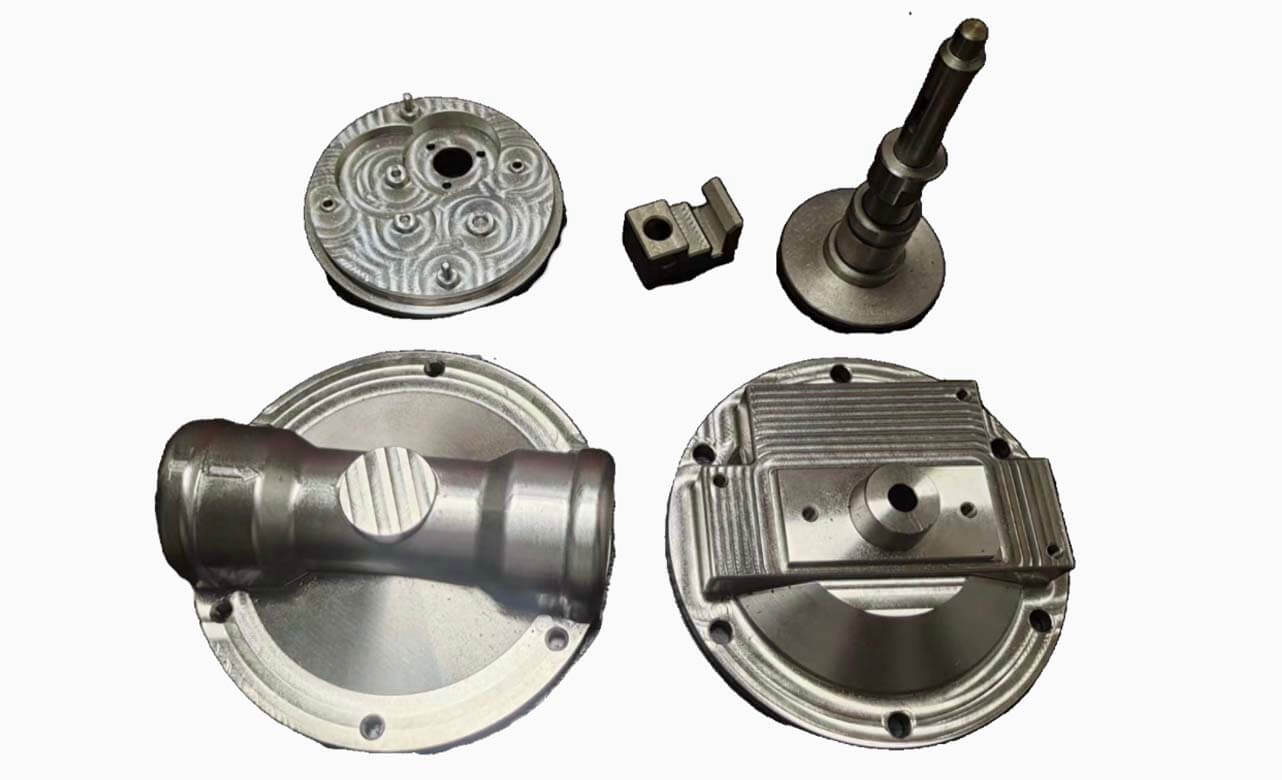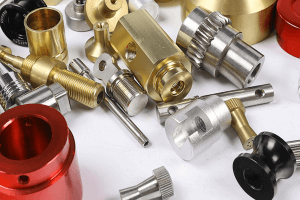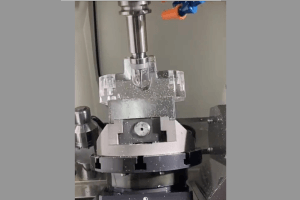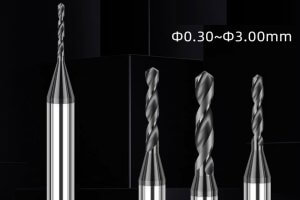What is a Master Mold and Its Role in Manufacturing
In the manufacturing world, a master mold is a critical component that serves as a precise template for producing multiple identical parts or castings. Master molds are used across various industries, including automotive, consumer electronics, medical devices, and custom crafts. They allow manufacturers to replicate complex designs and shapes, ensuring consistent quality and precision in every part. This guide will explore how CNC technology plays an essential role in creating these master molds, providing detailed techniques, material tips, and best practices.
When I first started working with master molds, I quickly realized that the success of any mold-based production process depends on the accuracy and durability of the master mold itself. CNC (Computer Numerical Control) machining offers unparalleled precision, enabling manufacturers to produce master molds with exacting details and smooth finishes, regardless of the complexity of the design. Using CNC to create a master mold also allows for repeatability, which is vital for large-scale production.
In this guide, we’ll walk through each stage of master mold creation using CNC technology, covering everything from initial design and material selection to the specific CNC techniques that enhance durability and precision.
Basic Steps to Make a High-Quality Master Mold
Creating a high-quality master mold involves several distinct steps, each requiring careful planning and execution. Below is an overview of the basic process, with an emphasis on where CNC technology contributes at each stage.
| Step | Description | CNC’s Role |
|---|---|---|
| 1. Design | Develop a detailed 3D CAD model of the desired part | Ensures precision and captures intricate details |
| 2. Material Selection | Choose a suitable material for the master mold | CNC optimizes machining performance for different materials |
| 3. Tool Path Planning | Program CNC to follow specific tool paths for each part of the mold | Maximizes accuracy and reduces machining time |
| 4. Rough Machining | Initial CNC cuts to remove bulk material | Creates a base shape for fine detailing |
| 5. Finish Machining | Fine-tune dimensions, adding detailed contours | Achieves high surface quality and detail accuracy |
| 6. Post-Processing | Polish and treat the mold surface if necessary | Provides a smooth surface for clean casting |
| 7. Testing and Adjustment | Test the mold and make adjustments if needed | CNC allows for easy reprogramming for refinements |
Each of these steps is essential to creating a master mold that will consistently deliver quality results. From my experience, it’s crucial to carefully follow each step, especially tool path planning and finish machining, as they determine the precision and longevity of the mold. CNC’s role in each step ensures that even complex shapes are produced with high accuracy and minimal waste.
Choosing Master Mold Materials and Their CNC Machining Characteristics
Selecting the right material for a master mold is a fundamental part of the process, as it impacts both the quality of the final mold and the efficiency of the CNC machining process. Below is a summary of common materials used in master mold creation, including their CNC machining characteristics and ideal applications.
| Material | Characteristics | CNC Machining Traits | Durability |
|---|---|---|---|
| Aluminum | Lightweight, corrosion-resistant | Easy to machine, smooth finish | Moderate |
| Steel | Strong, wear-resistant | Slower machining, retains detail | High |
| Brass | Corrosion-resistant, malleable | Good for fine details, moderate speed | Moderate |
| POM (Delrin) | Low friction, durable | Easy to machine, suitable for complex shapes | Moderate |
| ABS Plastic | Cost-effective, versatile | Good detail with CNC, low heat tolerance | Moderate |
| Epoxy Resin | High surface detail | Requires careful CNC control | Lower durability |
In my experience, aluminum is a popular choice for master molds due to its balance of machinability and durability. It’s suitable for a wide range of applications, and CNC can achieve a high-quality finish on aluminum, which reduces the need for post-processing. For high-use molds, however, steel is often preferred due to its strength and resistance to wear, though it requires a more careful and slower machining process.
Choosing the right material will depend on the intended use of the master mold, the number of casts needed, and the specific design features of the part. For intricate or high-wear applications, steel or brass might be the best choice. On the other hand, for rapid prototyping or short production runs, aluminum or POM (Delrin) could be more cost-effective and efficient.
Continuing with the next set of sections for “Master Mold Creation: CNC Techniques and Tips.” Here’s the content for:
- CNC Machining Process Details for Master Mold
- How CNC Enhances the Precision and Durability of Master Mold
- Application Case Studies of Master Mold in Different Industries
The CNC machining process is at the core of creating a high-quality master mold. Each step, from design to final polish, requires precision and careful attention to ensure the mold meets production standards. Below are the detailed steps and techniques used in CNC machining to achieve a high-precision master mold.
CNC Machining Process Details for Master Mold
Step-by-Step Guide to CNC Machining for Master Mold
- Design and CAD Modeling
Start with a precise 3D CAD model that captures every necessary detail. In my experience, the design phase is crucial because CNC machines follow exact digital blueprints, so capturing each contour and edge in the model is essential. - Tool Path Planning
Programming the tool path is a significant step, as it dictates the CNC machine’s movements during machining. By carefully planning the tool path, manufacturers can optimize both speed and accuracy. Complex shapes may require multiple tool paths with different tools to ensure each part of the mold is finely crafted. - Rough Machining
The rough machining phase removes the bulk of the material, leaving a base shape that can be refined. This phase requires faster cutting speeds and less precision, making it efficient for quickly reaching a rough mold form. - Finish Machining
In finish machining, CNC machines run at slower speeds and with finer tools, focusing on details like curves, angles, and edges. This phase is where most of the mold’s quality comes to life. Achieving a smooth surface finish reduces the need for extensive post-processing and enhances the durability of the mold. - Polishing and Surface Treatment
For molds requiring an exceptionally smooth surface, additional polishing or surface treatments can be applied after finish machining. Depending on the material, treatments like anodizing or coating may improve surface durability and performance.
| Process Step | Key Focus | CNC’s Contribution |
|---|---|---|
| Design | Detail accuracy | Translates design precisely |
| Tool Path Planning | Efficiency and accuracy | Optimizes machining time |
| Rough Machining | Material removal | Quickly achieves rough shape |
| Finish Machining | Precision and detail | Adds fine detail, smooth finish |
| Polishing | Surface smoothness | Optional, improves durability |
How CNC Enhances the Precision and Durability of Master Mold
Using CNC technology provides key advantages in both the precision and durability of master molds. Below, I’ll highlight specific areas where CNC shines in improving mold quality and consistency.
1. Precision in Dimensional Accuracy
One of CNC’s main strengths is its ability to achieve tight tolerances and consistent dimensions across complex shapes. This is particularly valuable in industries where each millimeter counts. For example, CNC technology can ensure that intricate geometries in a master mold are consistently replicated, reducing variation and defects in final products.
2. Improved Surface Quality
CNC machines produce smooth, even surfaces, which directly impacts the quality of the cast parts. A well-finished master mold minimizes post-processing and helps produce parts with clean surfaces and fewer defects. In my experience, achieving this level of surface quality significantly reduces the risk of errors in the casting process.
3. Durability and Extended Lifespan
Master molds need to withstand repeated use, especially in high-volume production. CNC machining not only allows for precise and durable material cuts but also creates sturdy structures that resist wear and tear over multiple casting cycles. For high-use molds, materials like steel and brass, machined with CNC, provide long-lasting performance and reduce the need for frequent mold replacements.
| CNC Advantage | Benefit in Master Mold | Result in Final Product |
|---|---|---|
| Dimensional Accuracy | High precision | Consistent part quality |
| Surface Quality | Smooth finish | Reduces post-processing |
| Durability | Longer mold lifespan | Fewer mold replacements |
By enhancing precision, surface quality, and durability, CNC machining plays a pivotal role in master mold production, allowing manufacturers to deliver high-quality parts with confidence.
Application Case Studies of Master Mold in Different Industries
Understanding how CNC-based master molds are used in real-world applications helps demonstrate the versatility and benefits of this approach. Below are three industry-specific case studies showing how CNC machining elevates master mold production.
Case Study 1: Rapid Prototyping in Consumer Electronics
In consumer electronics, design cycles are fast-paced, and there’s a need for rapid prototyping to test fit, function, and design. A design team used CNC to create an aluminum master mold for a prototype phone case. CNC allowed them to create a highly precise, durable mold that enabled multiple silicone castings for testing.
- Outcome: The aluminum master mold allowed the team to create a batch of accurate prototypes quickly, enabling design validation before mass production.
| Industry | Key Application | CNC Material Used | Result |
|---|---|---|---|
| Consumer Electronics | Phone case prototyping | Aluminum | Quick prototype validation |
Case Study 2: Precision Mold Production for Automotive Parts
Automotive manufacturers rely on precision for parts that must withstand extreme conditions. An automotive supplier needed a steel master mold to produce durable rubber gaskets. The CNC process provided exact dimensional control and a smooth surface, ensuring a snug fit for the gaskets and minimal leakage.
- Outcome: The steel master mold produced consistent, high-quality gaskets, reducing the need for adjustments during production and enhancing part performance.
| Industry | Key Application | CNC Material Used | Result |
|---|---|---|---|
| Automotive | Rubber gasket production | Steel | Durable, consistent gaskets |
Case Study 3: High-Standard Mold Requirements in Medical Device Development
In the medical device industry, components must meet stringent standards for safety and quality. A medical device manufacturer used CNC machining to produce a POM (Delrin) master mold for a silicone part used in surgical instruments. The CNC process allowed for precise tolerances and surface finishes, ensuring the final products met regulatory standards.
- Outcome: The master mold enabled reliable, high-precision silicone parts for surgical use, meeting the medical industry’s stringent quality standards.
| Industry | Key Application | CNC Material Used | Result |
|---|---|---|---|
| Medical Devices | Silicone parts for surgical tools | POM (Delrin) | Reliable, precision-matched parts |
These case studies highlight the versatility of CNC-based master molds across industries. From consumer electronics to medical devices, CNC’s precision, material compatibility, and durability allow for effective mold production that meets diverse production needs.
Tips to Improve Efficiency and Quality in Master Mold Production
Creating a master mold with CNC technology requires attention to both efficiency and quality. Below are practical tips that can streamline the production process while maintaining high standards of precision and durability.
1. Optimize Tool Path Planning
Efficient tool paths can significantly reduce machining time and material waste. By planning the CNC tool’s movement carefully, you can avoid unnecessary tool changes and movements, which saves time and enhances accuracy. In my experience, using shorter, more direct tool paths is key to both faster production and better mold quality.
2. Balance Speed and Precision
In CNC machining, there’s often a trade-off between machining speed and precision. High-speed machining can expedite the process, but it may reduce the detail in complex sections of the mold. For complex master molds, slower, more precise finishing passes can preserve fine details. Finding a balance between speed and precision helps optimize both productivity and quality.
3. Use High-Quality Cutting Tools
Using quality cutting tools directly affects the mold’s finish and the machine’s efficiency. Dull or low-quality tools can cause rough surfaces and increase wear on the CNC machine. High-quality tools maintain sharp edges longer and produce smoother finishes, reducing the need for post-processing.
4. Implement Real-Time Monitoring
CNC machines with real-time monitoring capabilities allow operators to track parameters such as temperature, speed, and tool wear. By monitoring these factors, issues can be addressed quickly, minimizing defects and downtime. This is especially valuable in production settings where consistency and reliability are critical.
5. Regularly Maintain CNC Machines
A well-maintained CNC machine operates more efficiently and produces higher-quality results. Regular cleaning, calibration, and inspection ensure that the machine’s components are in optimal condition. In my experience, consistent maintenance reduces unexpected downtime and extends the lifespan of both the machine and its cutting tools.
| Tip | Benefit | Result in Production |
|---|---|---|
| Optimize Tool Path Planning | Faster machining | Reduced production time |
| Balance Speed and Precision | Detailed, high-quality mold | Consistent part accuracy |
| Use Quality Cutting Tools | Smoother finish | Minimal post-processing |
| Real-Time Monitoring | Early issue detection | Fewer defects, higher output |
| Regular Machine Maintenance | Improved efficiency | Reduced downtime |
By following these tips, manufacturers can produce master molds more efficiently, ultimately reducing costs and improving the consistency of the final product.
Cost Control and Benefit Analysis of Master Mold Production
The cost of producing a master mold with CNC technology depends on several factors, including material choice, tool wear, machine time, and labor. This section covers how to control costs without compromising on quality, as well as the benefits that justify the investment in CNC-based master mold production.
1. Material Cost and Selection
Choosing a suitable material for the master mold affects both upfront costs and long-term savings. For example:
- Aluminum offers a good balance of cost and durability, suitable for medium-use molds.
- Steel has a higher initial cost but is extremely durable, making it cost-effective for high-use molds.
Selecting a material that aligns with the intended mold usage can reduce overall costs by preventing premature wear or replacement.
2. Tooling and Maintenance Costs
Quality cutting tools may have a higher upfront cost, but they reduce wear and last longer, making them cost-effective over time. Regular maintenance and timely replacement of worn tools also help avoid additional costs associated with poor quality or machine damage.
3. Machine Time and Labor Costs
CNC machine time is a significant contributor to the overall cost. Optimizing tool paths, reducing unnecessary tool changes, and balancing speed with precision all help lower machine time. Additionally, real-time monitoring and automation reduce labor requirements, lowering costs in the long run.
4. Benefit Analysis: The Return on Investment of CNC Master Molds
The initial investment in CNC master mold production can lead to several long-term benefits:
- Reduced Defects: Precision machining minimizes the risk of defects, reducing material waste and rework costs.
- Extended Mold Life: Durable, high-quality master molds produced by CNC machines have a longer lifespan, reducing the need for frequent replacements.
- Consistent Quality: CNC’s repeatability ensures that each mold meets the same standards, which is essential for industries that demand uniformity.
| Cost Factor | Cost-Control Strategy | Benefit |
|---|---|---|
| Material Choice | Match with intended usage | Cost-effective longevity |
| Tooling and Maintenance | Invest in quality tools | Lower long-term expenses |
| Machine Time and Labor | Optimize tool paths, automate | Reduced production costs |
| Investment in CNC | High precision, durability | Long-term quality and savings |
Through these strategies, manufacturers can manage costs effectively while taking full advantage of CNC technology’s benefits for master mold production. The upfront investment in quality materials and efficient processes pays off by minimizing defects, reducing downtime, and delivering consistent results.
FAQ
Q1: What makes CNC technology ideal for master mold creation?
CNC technology offers high precision, consistent results, and the ability to handle complex shapes, making it ideal for master mold production. CNC machines can achieve fine details and smooth surfaces, ensuring high-quality castings with minimal defects.
Q2: Which material is best for CNC-machined master molds?
The best material depends on the intended application:
- Aluminum is a versatile option, offering good machinability and moderate durability.
- Steel is highly durable and ideal for high-use molds, but it’s more costly and time-intensive to machine.
- POM (Delrin) is suitable for intricate designs and moderate durability needs.
Q3: How does CNC machining improve the lifespan of a master mold?
CNC machining produces precise and uniform cuts that minimize material stress, which contributes to the mold’s durability. Additionally, CNC’s ability to create smooth surfaces reduces wear and tear over time, extending the mold’s lifespan.
Q4: How can I ensure my CNC-machined master mold has a smooth finish?
A smooth finish depends on proper tool selection, slower finishing passes, and, if needed, post-processing like polishing. High-quality tools and optimized tool paths can also minimize surface imperfections.
Q5: What are the main cost factors in CNC-based master mold production?
Key cost factors include material choice, machine time, tooling, and labor. Optimizing tool paths, selecting suitable materials, and investing in quality cutting tools can all help control costs.
Q6: Can CNC create multi-part master molds?
Yes, CNC is well-suited for multi-part master molds, allowing for complex shapes and undercuts. Multi-part molds can be designed in CAD software and machined separately, then assembled to create a complete mold.
Q7: How do CNC tool paths impact master mold quality?
Tool paths dictate the CNC machine’s movements, affecting both machining time and precision. Efficient tool paths reduce machining time and minimize tool wear, resulting in better mold quality and lower costs.
Q8: What industries benefit most from CNC-made master molds?
Industries such as automotive, medical devices, consumer electronics, and custom manufacturing benefit from CNC-made master molds. These industries require precision and consistency, which CNC provides effectively.
Q9: How can I maximize CNC efficiency for master mold production?
Optimize tool paths, balance machining speed with precision, use quality tools, and perform regular maintenance. Automation and real-time monitoring can further increase efficiency and reduce labor costs.
Q10: What are the benefits of using CNC for high-volume master mold production?
For high-volume production, CNC ensures consistent quality, reduces defects, and extends the lifespan of the mold. The repeatability of CNC also enables efficient, large-scale production with minimal variation in mold quality.
Other Articles You Might Enjoy
- The Dependable Quality Assurance in China CNC Machining
1. Introduction: Setting the Stage for Quality Excellence In this introductory section, we lay the groundwork for an exploration into the world of quality assurance in China CNC machining. We…
- Bead Blasting: The Secret to Quality CNC Machining(cnc machining tools Mavis)
The world of manufacturing has witnessed revolutionary changes with the advent of Computer Numerical Control (CNC) machining. It is a process used in the manufacturing sector that involves the use…
- Precision CNC Machining of Steel: High-Volume Production
Precision CNC Machining and High-Volume Production As an integral part of modern manufacturing processes, Precision Computer Numerical Control (CNC) machining brings about unmatched accuracy and consistency in the production of…
- Zinc Alloys in CNC Machining: Benefits and Limitations
Introduction - CNC Machining and Zinc Alloys Computer Numerical Control (CNC) machining is a highly precise manufacturing process widely utilized in various industries to create complex parts. It makes use…
- Maximizing Precision in CNC Machining: Techniques and Tips
Importance of Precision in CNC Machining Precision is an fundamental component in the field of Computer Numerical Control (CNC) machining. It entails producing parts that are not only accurate but…
- High-Speed Machining Techniques in CNC Machining Parts: Secrets to Enhanced Efficiency and Quality
High-speed machining (HSM) is an intriguing and evolving field within CNC machining. The term "high-speed" is relative and varies depending on the machining method, workpiece material, and tool material. Defining…










 Afrikaans
Afrikaans Albanian
Albanian Amharic
Amharic Arabic
Arabic Armenian
Armenian Azerbaijani
Azerbaijani Basque
Basque Belarusian
Belarusian Bengali
Bengali Bosnian
Bosnian Bulgarian
Bulgarian Catalan
Catalan Cebuano
Cebuano Chichewa
Chichewa Chinese (Simplified)
Chinese (Simplified) Chinese (Traditional)
Chinese (Traditional) Corsican
Corsican Croatian
Croatian Czech
Czech Danish
Danish Dutch
Dutch English
English Esperanto
Esperanto Estonian
Estonian Filipino
Filipino Finnish
Finnish French
French Frisian
Frisian Galician
Galician Georgian
Georgian German
German Greek
Greek Gujarati
Gujarati Haitian Creole
Haitian Creole Hausa
Hausa Hawaiian
Hawaiian Hebrew
Hebrew Hindi
Hindi Hmong
Hmong Hungarian
Hungarian Icelandic
Icelandic Igbo
Igbo Indonesian
Indonesian Irish
Irish Italian
Italian Japanese
Japanese Javanese
Javanese Kannada
Kannada Kazakh
Kazakh Khmer
Khmer Korean
Korean Kurdish (Kurmanji)
Kurdish (Kurmanji) Kyrgyz
Kyrgyz Lao
Lao Latin
Latin Latvian
Latvian Lithuanian
Lithuanian Luxembourgish
Luxembourgish Macedonian
Macedonian Malagasy
Malagasy Malay
Malay Malayalam
Malayalam Maltese
Maltese Maori
Maori Marathi
Marathi Mongolian
Mongolian Myanmar (Burmese)
Myanmar (Burmese) Nepali
Nepali Norwegian
Norwegian Pashto
Pashto Persian
Persian Polish
Polish Portuguese
Portuguese Punjabi
Punjabi Romanian
Romanian Russian
Russian Samoan
Samoan Scottish Gaelic
Scottish Gaelic Serbian
Serbian Sesotho
Sesotho Shona
Shona Sindhi
Sindhi Sinhala
Sinhala Slovak
Slovak Slovenian
Slovenian Somali
Somali Spanish
Spanish Sundanese
Sundanese Swahili
Swahili Swedish
Swedish Tajik
Tajik Tamil
Tamil Telugu
Telugu Thai
Thai Turkish
Turkish Ukrainian
Ukrainian Urdu
Urdu Uzbek
Uzbek Vietnamese
Vietnamese Welsh
Welsh Xhosa
Xhosa Yiddish
Yiddish Yoruba
Yoruba Zulu
Zulu